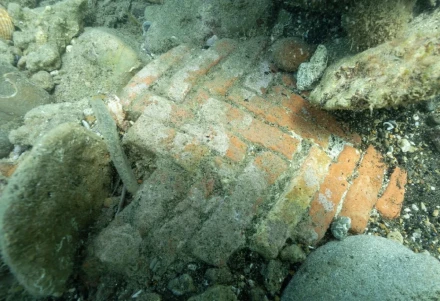History
According to experts, the structure near Campo di Mare is a pavilion belonging to a Roman villa, the extent of which is yet to be uncovered.
Excavations by the Underwater Archaeology Service of the Superintendency, in collaboration with CSR Restauro Beni Culturali, have identified two belts of brick walls built with a double layer of triangular bricks and mortar.

Soprintendenza Archeologia Belle Arti Paesaggio Etruria Meridionale
The team have uncovered opus spicatum (“spiked work”) flooring, a type of masonry construction of bricks laid in a herringbone pattern. During the Roman period, this pattern was primarily decorative and was typically used for paving, though it was also occasionally employed as infill in walls.